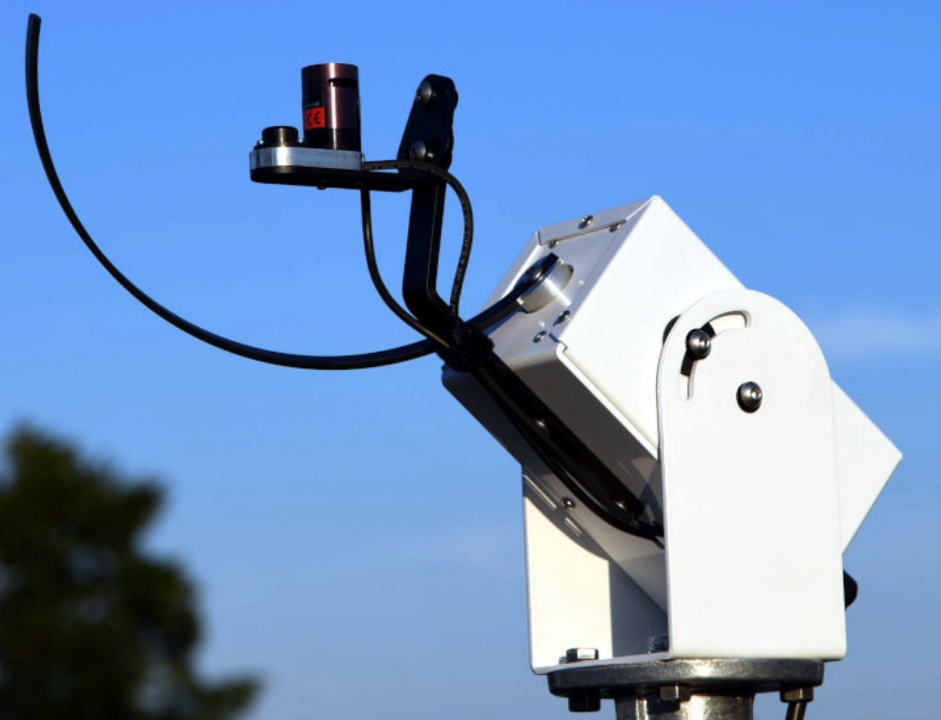Rotating Shadowband Radiometer (RSR)
 Irradiance's
Rotating Shadow Band Radiometer (RSR) is based on Ascension Technology's
Rotating Shadowband Pyranometer (RSP).
The instrument uses a solar cell based pyranometer
manufactured by LI-COR.
Irradiance's
Rotating Shadow Band Radiometer (RSR) is based on Ascension Technology's
Rotating Shadowband Pyranometer (RSP).
The instrument uses a solar cell based pyranometer
manufactured by LI-COR.
The RSR has a shadow band that quickly rotates once a minute, to momentarily shade the sensor from recieving light direct from the sun.
- When the shadowband is not covering the sensor, the instrument measures the global horizontal irradiance.
- When the shadowband covers the sensor, the instrument measures the diffuse horizontal irradiance.
- From these two measurements and the solar position, the direct normal irradiance is computed.
The accuracy of the RSR is limited by the spectral characteristics of the sensor.
Solar cell based sensors are used because of their fast response time. This is needed to capture the irradiance when the shadowband momentarily shades the sensor.
However this sensor type has some well documented systematic biases including:
- The spectral response of the sensor
- The directional response of the sensor
- The temperature response of the sensor
- The "Cat Ear" response of the sensor
